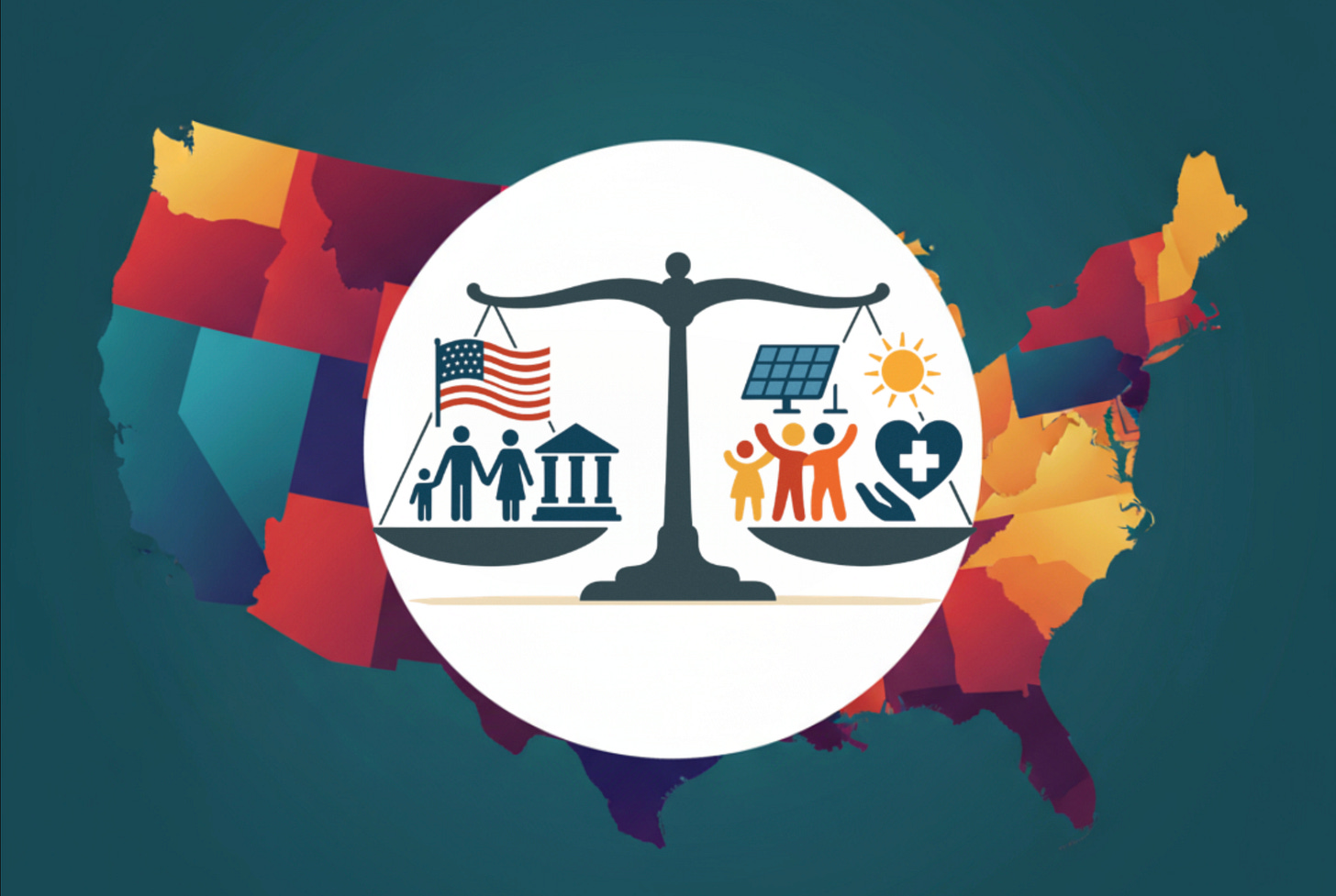Wednesday Edition: Preserving Tradition vs. Progress
America's culture war
Yesterday, we examined how Americans define identity itself, as independent individuals or as members of groups. Today, we examine a second cultural pattern: how Americans view change.
And this plays out like this:
Margaret has lived in Dearborn, Michigan, since 1965. The neighborhood has changed, and not for the better. She hears Arabic in the grocery store and can’t understand the conversations around her. The halal market replaced the butcher shop her father used for forty years. Her neighbors celebrate Eid instead of joining the Fourth of July block party her street has held since she was a child. The way “those” people speak, dress, and act makes her uneasy, often fearful. It’s not because anything has ever happened to her, but because of the differences. She’s met some of “them,” and ye,s they are nice and kind but just too different. This isn’t the country she grew up in. She wants America back.
James has lived in Dearborn since 1998. The neighborhood has changed, and it is far more interesting. He hears Arabic in the grocery store and learned a few phrases from his neighbor, who helped him jump-start his car last winter. The halal market carries spices and cuts of lamb he can’t find at the regular grocery store, and the owner showed him how to cook them. His street celebrates Eid now, and his family gets invited to share food with neighbors who moved in five years ago. He loves these differences because ‘variety is the spice of life.’ The neighborhood was Anywhere, USA. Now it’s a diverse, vibrant, and interesting place to live. This is what America has always been: a land of immigrants, making America stronger. This is what America has always been and will always be
Margaret operates from a conservative cultural perspective. She values what has proven itself over time. Traditions, institutions, and established practices exist because they work. Change should be slow, tested, and cautious. Rapid reform risks losing what made the system function.
James operates from a progressive cultural perspective. He values continuous improvement. Every generation must examine the systems and ask whether they still work. Societies grow or die, and progress requires questioning tradition, even when it’s uncomfortable.
Neither perspective is superior, and both exist in American society. But these two ways of viewing change increasingly sort Americans into opposing political camps. And when that happens, debates about schools, policing, immigration, and environmental policy become fights about whether society should preserve or transform.
The Pattern Shows Up Everywhere
When George Floyd was killed in 2020, protests erupted across the country. Cities faced a question: how should policing change?
In Minneapolis, the city council considered disbanding the police department entirely and creating a new public safety system. Councilmember activists argued that reform had failed for decades. The institution itself was broken. Real change required starting over with a different structure, different training, different accountability systems, and different approaches to public safety.
Meanwhile, police unions and many residents opposed dismantling the department. They pointed to crime rates, response times, and the complexity of public safety. Police need better training and stronger accountability, but the institution has kept the city functional for generations. Abolishing it creates chaos. Reform the system, don’t destroy it.
Same problem. Different cultural perspectives on whether progress means fixing what exists or building something new.
This conservative/progressive divide shapes every major cultural conflict.
On school curriculum, conservatives defend teaching established knowledge and proven content that has educated generations. Progressives push for updated materials that reflect diverse perspectives and current scholarship.
On immigration policy, conservatives emphasize maintaining cultural continuity and controlled demographic change. Progressives emphasize adapting to global migration and demographic evolution.
On climate policy, conservatives protect economic systems and energy infrastructure that currently work. Progressives demand a rapid transition despite economic disruption.
On gun rights, conservatives preserve constitutional tradition and proven self-defense rights. Progressives adapt policy to address changing safety data and mass shooting patterns.
Why The Conflict Feels Personal
When Republicans say “this is how we’ve always done it,” they’re not being obstinate. They’re expressing a perspective where tradition represents accumulated wisdom. Institutions and practices that survive across generations do so because they work. Rapid change destroys valuable knowledge embedded in tradition.
When Democrats respond, “that doesn’t work anymore,” they’re not being reckless. They’re expressing a perspective where progress requires questioning the status quo, and usually changing it. What worked in the past may not work. Systems that don’t evolve become irrelevant: businesses fail, communities hollow out, and nations fall.
Neither person is wrong about their cultural perspective. These fears are real. They shape how people evaluate every proposal for change. However, the reality of the world is that change is inevitable.
The conflict is not about specific policies. It is about how conservative or progressive society should be.
Tomorrow, we examine the third cultural pattern: whether Americans prioritize loyalty to their own communities or universal principles that apply to everyone.
A Note on Terminology
The cultural pattern described here draws from Hofstede’s research on time orientation, though his terminology differs from American political usage. Hofstede labels cultures “long-term oriented” when they emphasize adaptability, pragmatism, and willingness to modify practices based on changing circumstances. He labels cultures “short-term oriented” when they emphasize tradition, established truths, and preservation of social conventions.
In American politics, we reverse this framing. “Conservative” means preserving tradition and resisting rapid change, which aligns with Hofstede’s short-term orientation. “Progressive” means continuous reform and adaptation, which aligns with Hofstede’s long-term orientation.
The terms differ, but the cultural pattern is the same: some people believe society should preserve what has proven valuable, while others believe it must continuously examine and reform itself.
Join us for more cultural perspective on Instagram, TikTok, and YouTube

 Tiktok failed to load.
Tiktok failed to load.Enable 3rd party cookies or use another browser




